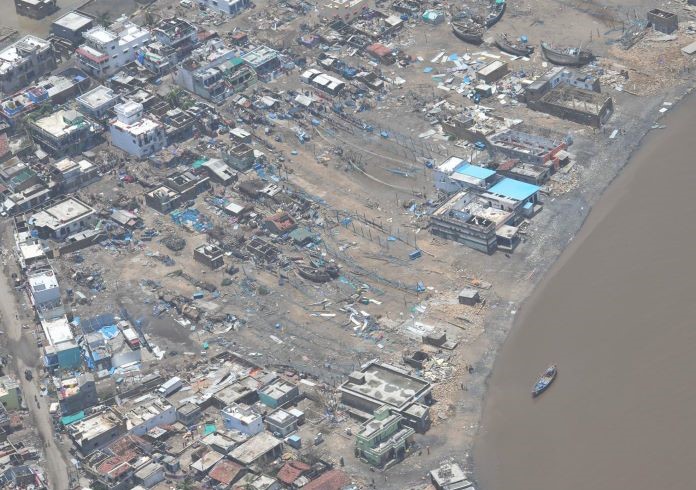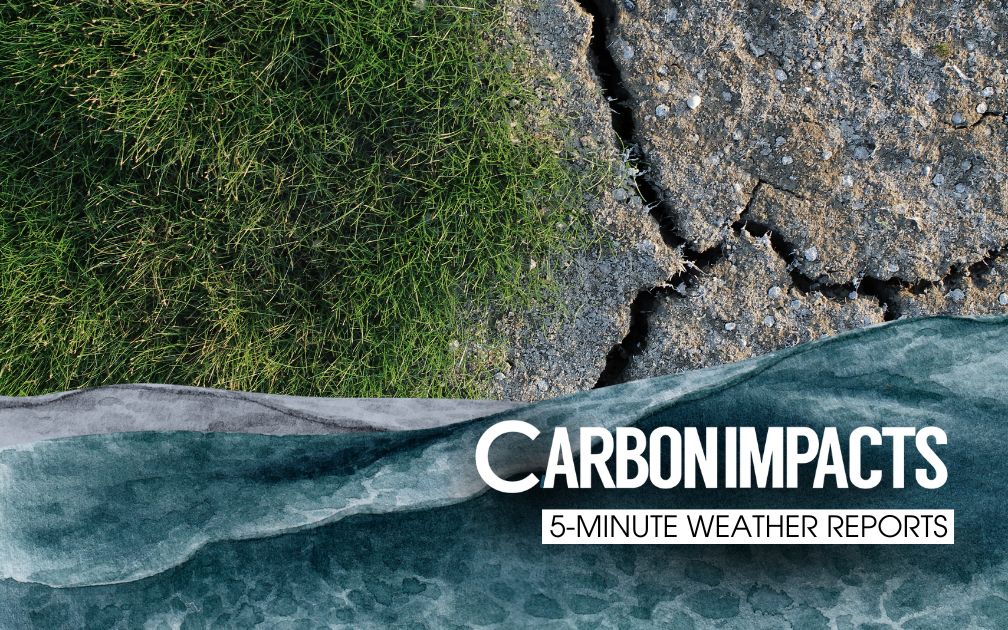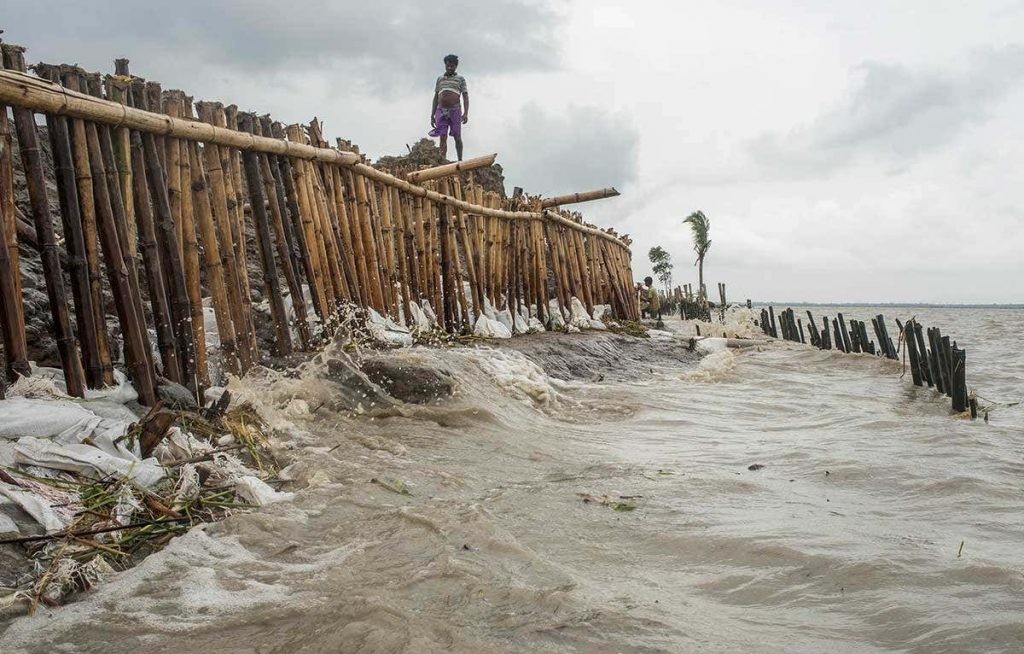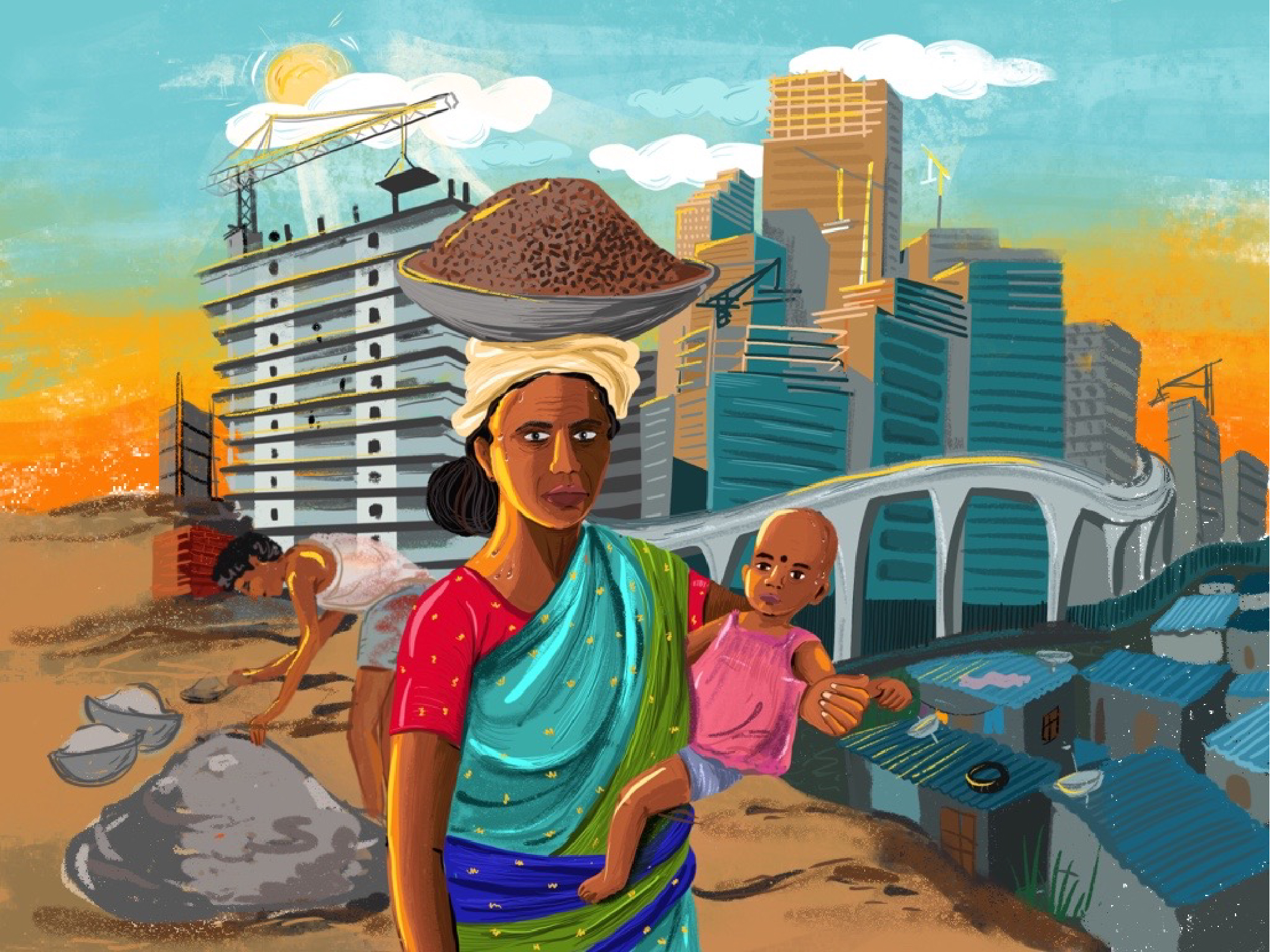Towards a resilient future: Lessons from Cyclone Tauktae
To build back better, a smarter approach would be to increase the resilience not just of damaged structures, but also of local communities that don’t have the means to rebuild
By Rohit Dharmadhikari , Tejas Deshmukh / Nov 30, 2021

Tauktae's trail of destruction on Gujarat's coast | Photo: Twitter
In the Burmese language, the word tauktae (pronounced as tau’te) means Gecko, which is known to be a highly vocal lizard. By this measure, Cyclone Tauktae— the cyclonic storm that formed over the Arabian Sea and barreled through India’s west coast, more than lived up to its name. It caused destruction primarily in six districts of Gujarat, with moderate to severe damage in three of the districts—Bhavnagar, Amreli and Gir Somnath. Formed on May 14, 2021, Cyclone Tauktae dissipated on May 19, 2021. It was the strongest and most severe tropical cyclone to make landfall in coastal Gujarat since 1998. At least 169 people died in India, and another 81 went missing after Tauktae hit. It was also estimated that the cyclone caused damage to the tune of INR 15,000 crore ($2.14 billion) and around 0.39 million children were affected in Gujarat.
Responding to disasters is a critical and prioritized function of the government, among other major stakeholders. Hence, it is imperative to learn from the event for better response and enhanced resilience, which will also go a long way in minimizing damage as well as loss of lives. Since disasters have both short-term and long-term impacts, post-disaster studies need to be conducted so that lessons can be learned at all phases. This will ensure that stakeholders are better prepared the next time such an event takes place.
Investing in preparedness measures
Need for resilient infrastructure: Situation reports after the cyclone mention that close to 70,000 electric poles were damaged. Some will be re-erected and some were damaged beyond repair. It has been observed that the damage to mobile (cell-phone) towers has been minimal due to the design of the structure that can withstand the winds from cyclones. However, electric poles, made up of stainless steel/iron, have seen the maximum damage because they are not able to withstand the high wind speed.
To make the infrastructure resilient, Fibre Reinforced Polymer (FRP) material can be piloted, which has better tensile strength, the ability to withstand wind pressure and proves easier to re-erect in case it falls down after a cyclone.
Need for a cyclone risk management plan: Although disaster management plans exist at the district level as well as the state level, many of the aspects are yet to see the light of day. Authorities are often left wanting for correct information, response and actions to be undertaken as a part of the crisis management plan. There is an urgent need for clarity of the roles and responsibilities of various stakeholders in a steady as well as incident state. Government functionaries need to know the exact actions to be taken for a convergent response to cyclones, and this is possible when there is a well-documented plan, which is also tested periodically.
The testing of the plan can be done as a scenario-based exercise involving government functionaries, community agyawans (leaders), non-governmental organizations (NGOs)/community-based organizations (CBOs) situated in the geography and international aid agencies. With this kind of exercise, what becomes very clear are the roles and responsibilities of each stakeholder and how duplication of efforts can be minimized in an actual emergency situation, thus leading to better turnaround times and efficacious response.
Efficient and effective governance
Efficient response for faster recovery: Post Cyclone Tauktae, there were many NGOs, civil society organizations (CSOs), international non-governmental organizations (INGOs) and even UN agencies that had boots on the ground to help in relief and response. After interacting with the agencies, it was found that the relief kits were not ready and their contents were to be decided after conducting the Rapid Needs Assessment (RNA). While this is an accepted practice, it is more important that the common items in a relief kit be available and some specifics that are to be included after the needs assessment be procured/made available at the last moment. This will save a lot of time at the crucial hour and relief would be disbursed faster.
For a prudent response, data will play a major role. Data from past responses to disasters can help responders understand the common relief kit contents as per the disaster and geography of the place. Only a few specifics can be added later. Hence, the relief kits can be kept ready. Similarly, it was understood after observations and interactions with agencies, that the Joint Rapid Needs Assessment forms were also not ready for a rapid assessment. Developing the format after a disaster is like digging a well when one feels thirsty. To better the response, these formats need to be ready in advance and can be used to survey the disaster site at zero hour itself.
Need for a commission on lessons learnt and reconciliation: In line with the PM’s 10 Point Agenda to make use of every opportunity to learn from disasters, there must be studies on the lessons after every disaster. There is a strong and urgent need to develop a culture of reflecting upon the entire ambit of disaster management. Failing to do so has led to repeating mistakes of the past and has neither helped in reducing the vulnerability nor increasing the resilience of communities and systems.
Building the capacities of village-level stakeholders
Shift from relief-centric to resilience-centric approach: It can be estimated through ground zero studies, observations and interactions with fishermen community of Jaffrabad (Amreli District of Gujarat) that around 150 plus boats out of a total 800 have been completely damaged and are beyond any repair. One boat costs around INR 28-30 lakh ($37,000 –$40,000) and this purchase by the fishermen community has been made possible through savings and investments across generations. Now that the boats have been damaged, it is impossible for the owners to purchase new boats even with a subsidy of around INR 2-3 lakh ($2,500–$4,000) as provided by the state government of Gujarat. There is a generational livelihood cost that has been lost due to the cyclone. Although the government has provided relief to the fishermen, it is not enough to regain the lost livelihoods. Hence, there is a pressing need to shift the approach from being relief-centric to being resilience-centric, meaning the focus should be on diversification of incomes, opportunities and livelihoods. There needs to be long-term intervention by NGOs as well as state machinery to impart the skills and training needed for the community to be able to withstand such stresses and shocks through alternative livelihood opportunities.
Need to get familiarized with Multipurpose Cyclone Shelter (MPCS): Community members staying in highly vulnerable pockets of the coast or in ‘kuccha’ (temporary)houses are usually made to shift to cyclone shelters until the threat has reduced and a major part of the cyclonic winds have passed the area. However, it was observed that people were reluctant to leave their houses and shift to the MPCS. The primary reason behind such a preference is the non-familiarity with the structure. It is, therefore, necessary to make adequate and frequent use of the building for various purposes such as panchayat meetings, disaster management training and drills, which will increase the accessibility and reduce the hesitancy of community members from using the MPCS during times of distress. In alignment with the Sendai Framework for Disaster Risk Reduction, the government will have to collectively invest in disaster risk reduction for resilience, enhancing disaster preparedness for effective response and not just Build Back Better, but Build Back SMARTER with locally available cost-effective alternatives.

The case in point being the reconstruction of damaged rooftops due to
a cyclone. It is an accepted practice to build rooftops with Mangalore
tiles instead of cement/concrete due to multiple factors—cost of
construction being one major factor. Building back better will entail
constructing the roofs with cement and increasing the durability as well
as strength. However, building back smarterwill require increasing the
resilience of structure with locally available options such as gluing,
using thatched sticks or interlocking wood pieces that bind the material
strongly and is cost effective. This can be widely adopted by the
marginalized and vulnerable, who do not have much resources at their
disposal and cannot always afford to build cement structures. There is a
need for proactive preparedness rather than a reactive response to
disaster risks for ensuring a resilient future and realize sustainable
development goals (SDGs) being implemented in their true sense.


